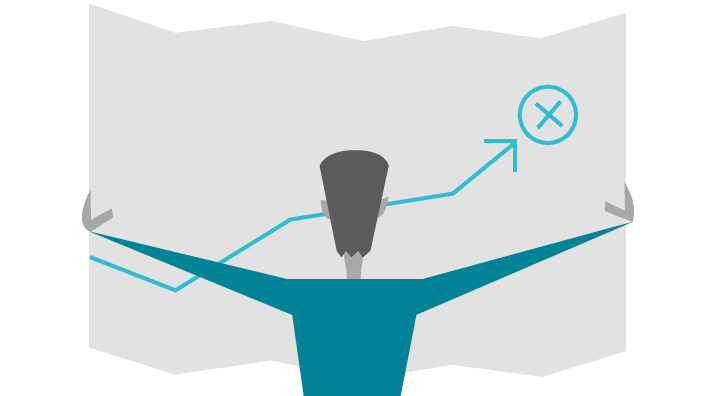“Inverting the risk continuum” is when you — either individual you or work team you — spends a huge amount of time on relatively low-impact, low-risk decisions.
Inverting the risk continuum can lead a company to lose focus of core business questions. I recently spoke to a group of leaders whose company had made a significant acquisition, one that doubled the company’s size. When I asked them to write down the most important decision they were making at that moment, 180 out of 200 said they were making a staffing decision.
Two funny things about that quote:
- It’s not actually meant to imply hiring isn’t important. But if you’re in the middle of a huge acquisition, that could make/break a five-year span for your company, you really shouldn’t be overly-focused on staffing at that point — and yet 90% were.
- I’d actually bet the number of people who knew what they should be focused on was incredibly low. Priority management is horrible at companies. Most of those 180 probably said “Staffing!” because they had no idea what they were even supposed to say. Truth is the acquisition was probably managed by the CEO, one lieutenant, and a consultancy. The 200 polled probably managed a few spreadsheets related to the process, then subsequently bellowed “Very busy on staffing needs!” when asked what they even do. We all know the drill.
A quick note on decision-making as a whole
While we do habituate a large chunk of our actions, decision-making is still incredibly important. And, as you’d predict, most humans aren’t great at it — especially when we put us into organizations. Decision-making in organizations has been shown to have too much variability, be largely rooted in ass-kissing around low-impact ideas, and be skewed towards controllable short-term elements.
I’m sure most of you have worked in a place where any series of decisions from above seemed utterly head-scratching. It’s not uncommon.
This all works at the individual level too. We’ve all been on airport or bank lines where the person right in front of us takes 45 minutes to accomplish even the simplest tasks or make decisions based on the questions of the teller/service rep. It’s infuriating. I stood behind a lady for 12 minutes at a movie theater once who was asking about plot points, run times, popcorn options (which wasn’t even at the ticket counter), and more. It’s like she had walked into this building and said “What happens here?” You can find all this on an app before you come in to make the actual decision. It’s not that hard, but people like this do exist.
Short, then: decision-making is incredibly important and yet, by and large, we don’t do it so well.
Why would this “inverting the risk continuum” thing be a concept?
This one’s not too hard to answer:
- Focusing on low-risk decisions is safer.
- Most people would rather control a situation (low-impact, low-risk) then actually do something impactful, because when impactful bombs, you’re on the hot seat/line more.
- It’s easier to be fake busy than actual productive. Most of us have figured that out by now and hope no one really notices.
- Honestly in a hierarchy, if you don’t make the truly big money, you’re gonna fart around on the decisions you make — then justify it to yourself with “That’s not my pay grade.” (Whenever people at work talk about “shared decision-making,” it’s an absolute punchline unless incentives are correspondingly adjusted. No one will share in a decision if they make $50K less. That’s just a recipe for getting chucked under a train.)
Individually I’d say people often don’t know what should be a priority in their life (hello Mark Manson) so they spend lots of time on little dinky things. Low-risk, low-impact is much easier to manage out then “Hey, should we just up and move to Vancouver?”
Can we get better at decision-making?
Yea, of course. But a lot of decision-making is tied to understanding priority. That’s notoriously pretty bad when you create organizations, i.e. groups of people with individual priorities now forced to work together in the interest of maintaining a livelihood.
Individuals should be better at decision-making, but again, some people getting out of bed and putting on pants is an absolute miracle. Life is a bell curve of motivation and intellect, even if we don’t want to admit that.
People will always gravitate to the safest pole in terms of decision-making, especially if they lack the contextual authority. So in organizations this won’t go away anytime soon, but it certainly helps to gum up the works in the middle. Ever wonder why middle managers hurt the bottom line so much?
It’s because most of what they do is just inverting the risk continuum, i.e. farting around and wasting time on stuff that barely matters. But it matters to them, because it’s the work they understand. As that attitude filters down to other levels, work engagement wanes. It’s all an ecosystem.
